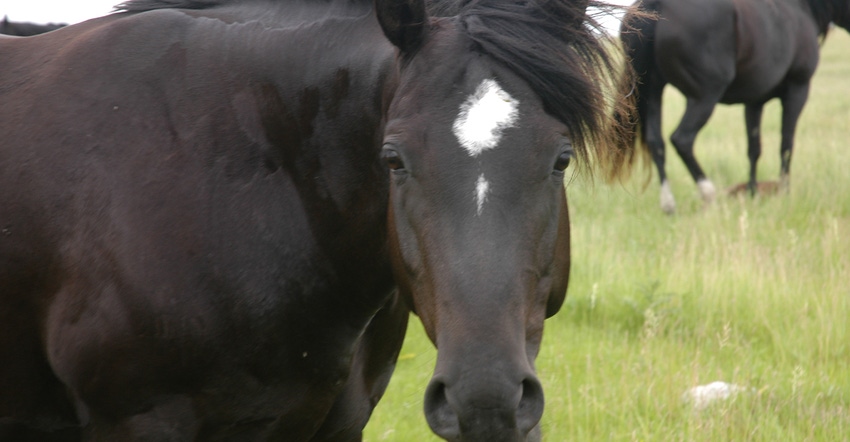January 6, 2020

A horse in Bottineau County, N.D., has been confirmed positive for equine herpesvirus myeloencephalopathy (EHM), the neurologic manifestation of the equine herpes virus-1 (EHV-1).
Since October, several outbreaks of EHM have been reported in several states including California, Oklahoma, Pennsylvania and Virginia.
EHV-1 can be spread through the air and on contaminated equipment, clothing and hands. Biosecurity measures that can reduce the risk of spreading the disease include avoiding shared food or water containers and preventing nose-to-nose contact.
Out-of-state horses and other equines entering North Dakota for any length of time must be accompanied by a certificate of veterinary inspection.
“Certificates of veterinary inspection help us better monitor the movement of equines into North Dakota and help determine potential sources of diseases,” says Susan Keller, state veterinarian.
EHV-1 can cause respiratory disease, abortion, neonatal death and sometimes the neurologic form of the disease, EHM. Vaccinations against EHV-1 have been shown to reduce viral shedding and curb the spread of disease and may decrease the severity of infection. While no vaccine can completely prevent EHM, vaccinating healthy animals and giving booster vaccinations before travel, competition or boarding is recommended.
“Horse owners should discuss vaccination strategies and other preventative measures with their veterinarians,” says Doug Goehring, North Dakota agriculture commissioner.
Although highly infectious and contagious among horses, EHV-1 poses no threat to human health, according to the North Dakota Health Department.
Source: NDDA, which is solely responsible for the information provided and is wholly owned by the source. Informa Business Media and all its subsidiaries are not responsible for any of the content contained in this information asset.
You May Also Like




